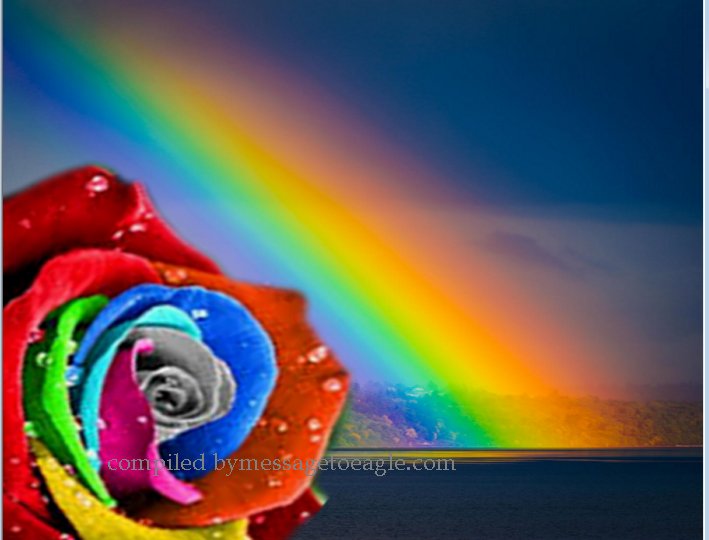How Do Humans See Colors?
MessageToEagle.com – All the colors we see are an effect of light. Our eyes detect light particles (photons) because they hit our retinas.
There are special cells in our retinas, which are sensitive to color. These cells (called cones) send messages about color to our brains, which have the ability to process these messages and thus to receive colors.
We have about six million cones and rods in each retina, so together our eyes have at their disposal – 12 million cones. They react to light and tell our brains what colors we see.
The cones are densely packed in a small, tiny place “fovea centralis” located at the back of our eyes. The cones in our eyes are of three types and respond most strongly to the colors red, green and blue, in that order and they work best in light-rich environments.
From these three colors, and by adding and mixing in information about shading and tone, come the ten million colors humans can see.
Cones work in bright light and we can see color during the day with several details (the leaves on a tree, the fine print in a newspaper or color details in a puzzle). When it’s dark the cones in our eyes – turn off and therefore, we have difficulties to see color at night.
NOTE: Some people cannot see some or all colors and this condition is known as color blindness.
Color blindness (usually regarding red/green) occurs when some of the cones in the eye’s retina are not working properly or may be missing (an injury or disease, for example.) Most color blindness however, is inherited from birth.
Certainly our eyes are an amazing piece of engineering but they cannot see everything, for example, they are only able to see light of certain wavelengths – and it’s blind to much more light than it can see.
See also:
Pirahã: Weird Language That Lacks Words For Numbers And Colors
What Colors Can Newborn Babies See?
Face Blindness Makes You Surrounded By Strangers: Why Some People Cannot Recognize Faces?
Visible light that can be detected by human eyes is only light with wavelengths of about 400 nanometres to 700 nanometers, which describe every color of the rainbow, from red to violet – all the light that our eyes are able to see.
So, we can say we see much because we are able to see the rainbow of colors.
At the same time, we have to remember that the rainbows in the sky are – unfortunately – only a very tiny part of incredibly rich cosmic spectrum of light.
This spectrum is invisible to human eye!
MessageToEagle.com
Expand for referencesReferences:
Schacter D. Daniel G. Wegner D. Hood B. Psychology
Simon Brown S.Street S, Watkins L. Color and the Moving Image
Related Posts
-
 Mystery Of The Ashkenazi Jews Found In A Medieval Mass Burial – Solved!
No Comments | Aug 30, 2022
Mystery Of The Ashkenazi Jews Found In A Medieval Mass Burial – Solved!
No Comments | Aug 30, 2022 -
 Matrix Dilemma – Do Humans Live In The Ultimate Computer Game Of The Superior Ones?
No Comments | May 30, 2013
Matrix Dilemma – Do Humans Live In The Ultimate Computer Game Of The Superior Ones?
No Comments | May 30, 2013 -
 Susa: One Of The World’s Oldest Cities That Served As Capital Of The Elamite Empire
No Comments | Nov 21, 2023
Susa: One Of The World’s Oldest Cities That Served As Capital Of The Elamite Empire
No Comments | Nov 21, 2023 -
 World’s Longest Underground River Flows Beneath The Yucatán Peninsula
No Comments | Jan 16, 2016
World’s Longest Underground River Flows Beneath The Yucatán Peninsula
No Comments | Jan 16, 2016 -
 Controversial Artifact: What Kind Of Message Does The Phaistos Disk Contain?
No Comments | May 13, 2014
Controversial Artifact: What Kind Of Message Does The Phaistos Disk Contain?
No Comments | May 13, 2014 -
 Tiktaalik Roseae: A 375-Million-Year-Old Fish Had Fins For Walking
No Comments | Apr 29, 2016
Tiktaalik Roseae: A 375-Million-Year-Old Fish Had Fins For Walking
No Comments | Apr 29, 2016 -
 Childhood Home Of Jesus May Have Been Found Underneath The Sisters Of Nazareth Convent
No Comments | Nov 24, 2020
Childhood Home Of Jesus May Have Been Found Underneath The Sisters Of Nazareth Convent
No Comments | Nov 24, 2020 -
 Our Creator Is A Cosmic Computer Programmer – Says JPL Scientist
No Comments | Sep 3, 2012
Our Creator Is A Cosmic Computer Programmer – Says JPL Scientist
No Comments | Sep 3, 2012 -
 What Would Really Happen If We Tried To Send Humans To Venus?
No Comments | Sep 11, 2017
What Would Really Happen If We Tried To Send Humans To Venus?
No Comments | Sep 11, 2017 -
 Cosmic Mystery – What Huge Object Caused The Hole In One Of Saturn’s Rings?
No Comments | Jun 22, 2017
Cosmic Mystery – What Huge Object Caused The Hole In One Of Saturn’s Rings?
No Comments | Jun 22, 2017


